As you might have already read, I’m not necessarily the biggest fan of Instant film photography. It’s expensive, and the results are so unpredictable I can’t justify the cost. But then again, I love Lomography. That, in itself, is unpredictable and expensive. So it should come as no surprise — or maybe it should — that I picked this new Lomography Lomo’Instant camera, and I think I’m starting to dig it.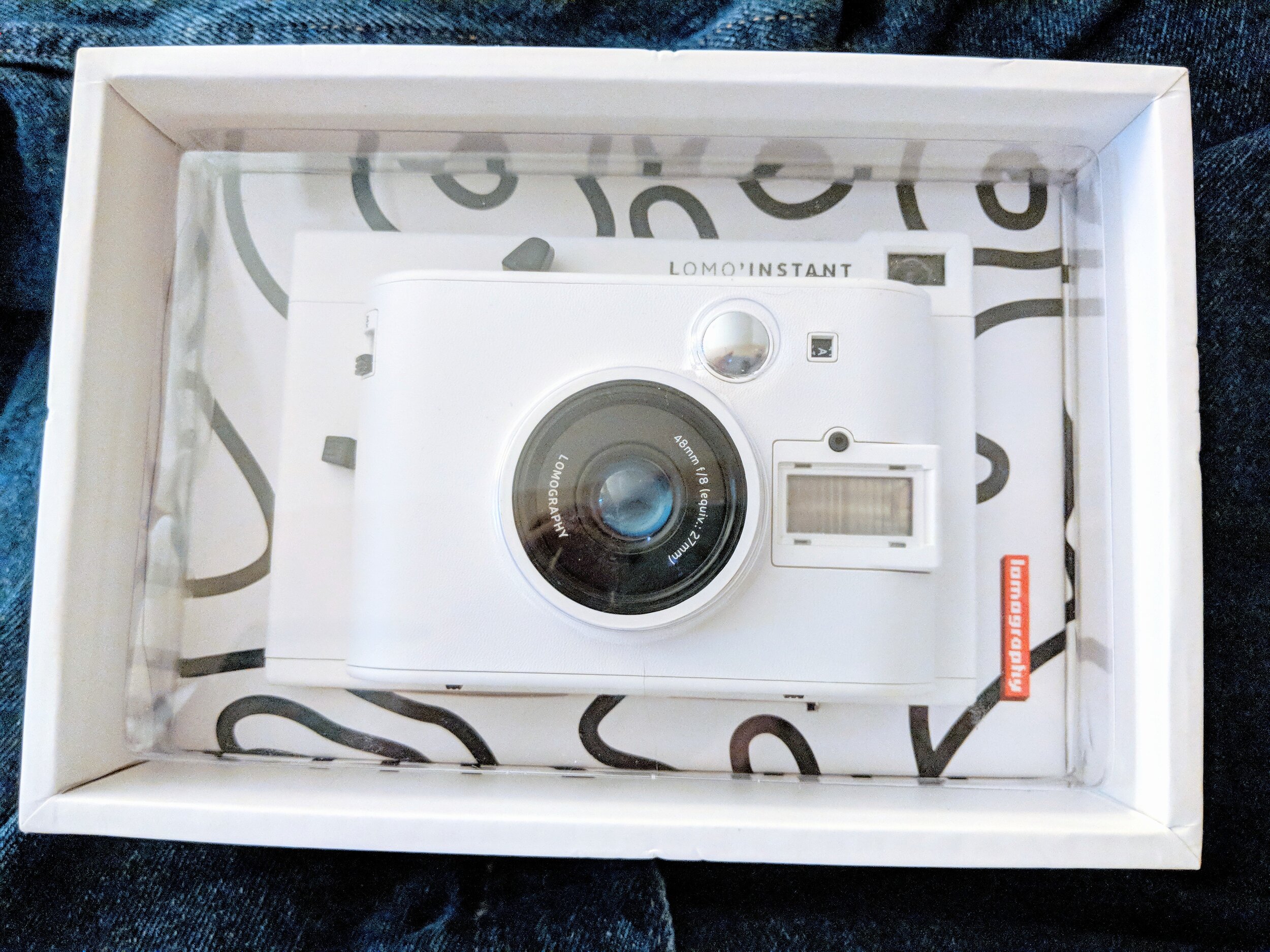
The Specs
The camera is stuffed full of interesting features, but let’s get the boring stuff out of the way. It’s an instant camera that uses Fujifilm Instax Mini cartridges. The picture essentially is the size of a business card, and you get ten shots in each cartridge. It runs on four AAA batteries (not included) and they’re somewhat of a pain to figure out which way they go in. I kinda looked like one of those gorillas at the zoo with a new pumpkin full of treats, trying to figure out how to get them. The camera has a built in flash and a 27mm equiv wide lens. It shoots with +/- 2 stops by a little wheel on the front of the camera above the lens. It allows you to over/under-expose by actually adjusting the aperture. It reminds me of the exposure setting on the Polaroid SX-70, except instead of a filter over the aperture, it actually has an aperture wheel that selects f/8, f/11, f/16, f22, f32, and you can see the aperture change in the lens.
Multiple-Exposure Mode
The camera has a switch on it labeled MX which allows you to make multiple exposures to a single picture. The upside is you can shoot some interesting shots. The downside is that guessing a stranger’s birth year might be easier than guessing correct exposure on this camera. The guide has a nice scale, but it’s not always reliable. I shot the below photo in a warmly lit room with the flash on at f/16 and 1/125sec (i.e. Auto mode). It’s really dark. I get it, f/16 indoors is just dumb, but I was taking into consideration it’s in Auto mode, and that it would compensate. It doesn’t. Even in auto, it’s manual. hah!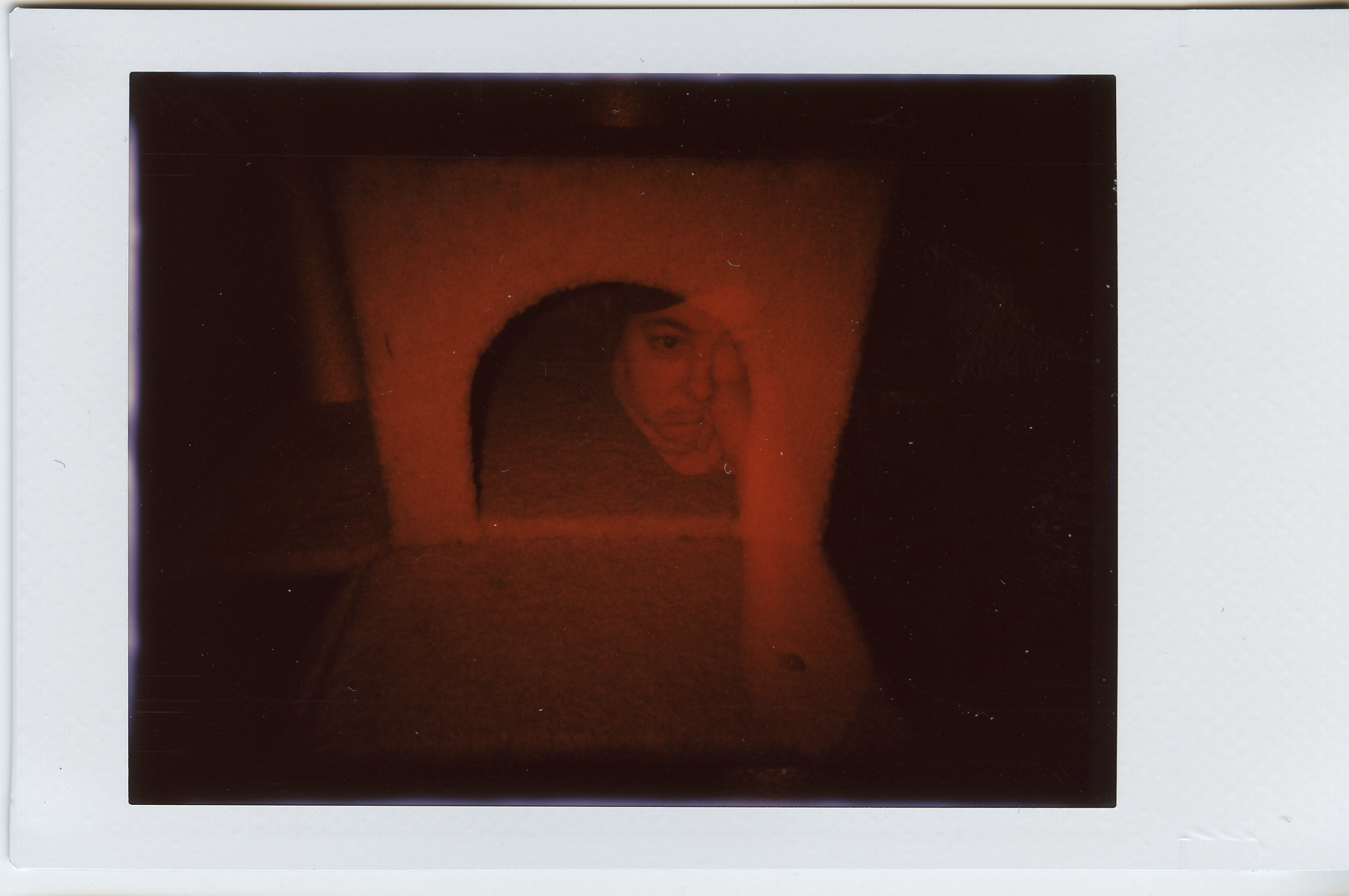 This next shot was taken outside, overcast day, with +1 exposure, and flash on 800 ISO film. Still almost unusable, but I’m starting to get better at judging exposure.
This next shot was taken outside, overcast day, with +1 exposure, and flash on 800 ISO film. Still almost unusable, but I’m starting to get better at judging exposure.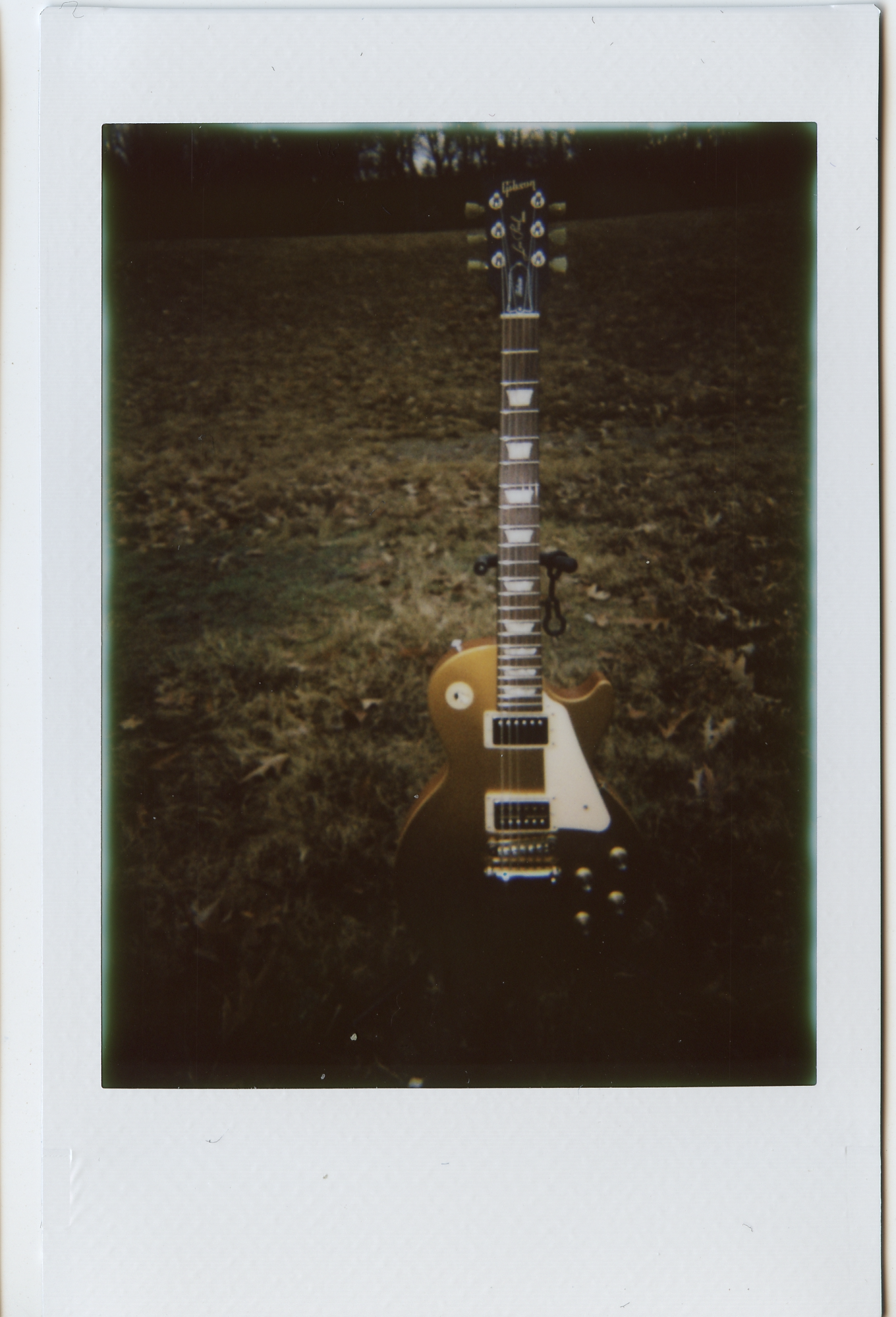 The other cool part of this feature is that it will keep taking exposures until you flip the switch away from the MX position. Then it ejects your photo!
The other cool part of this feature is that it will keep taking exposures until you flip the switch away from the MX position. Then it ejects your photo!
Vignette, My Lovely Friend
Oh the vignetting in the corners is pure joy…if you are into that kinda thing. Even wide open with flash it’s going to give you some darkened corners, and if you drop one stop you’ll get this cool oval frame effect. Along with the vignetting, is the touch of exposed edges that are uneven like the camera doesn’t squish the chemicals all the way to the edge of the frame.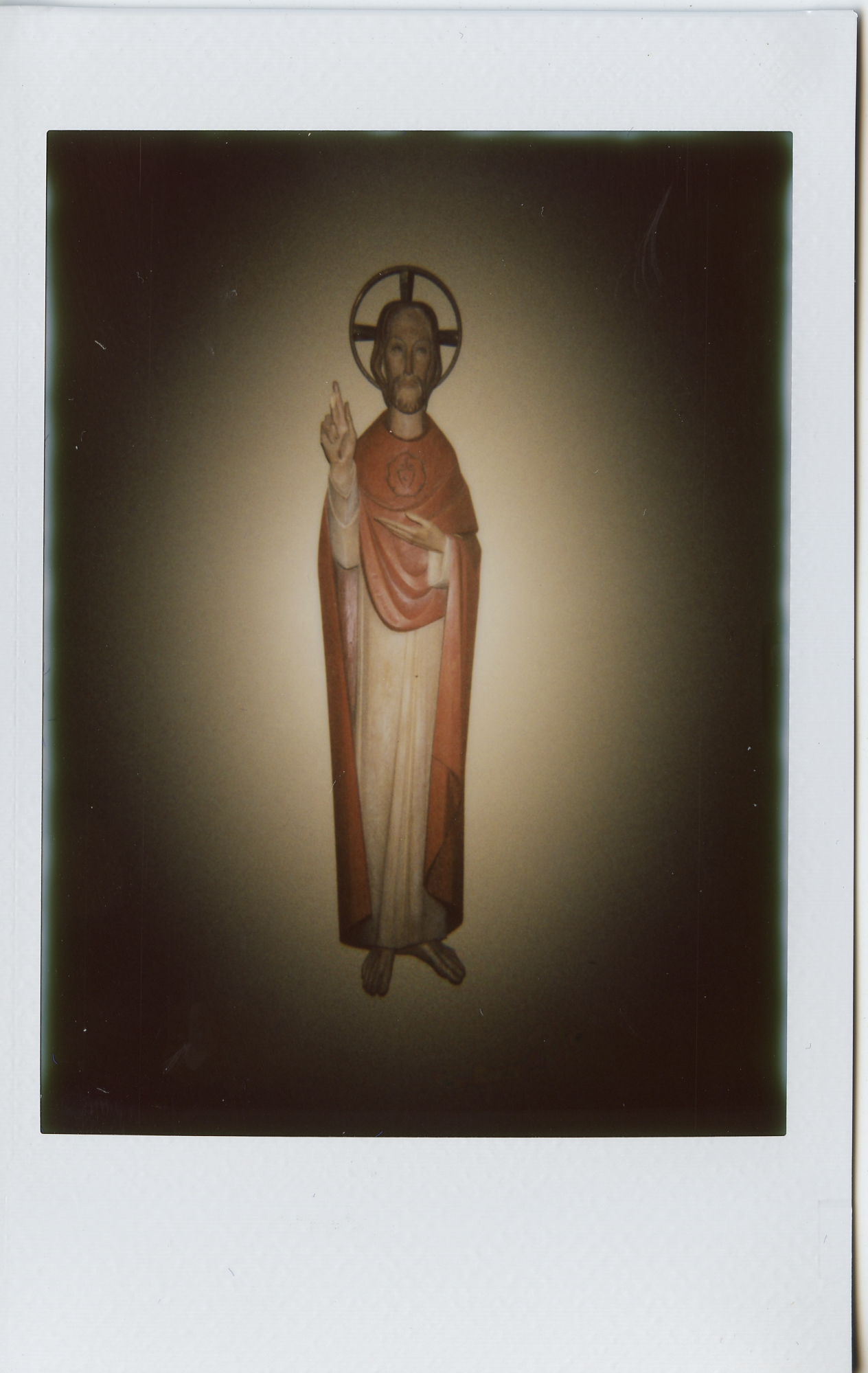 Along with the vignetting and edge issues, there is the soft focus of the lens itself. It actually has adjustments for 1m-Infinity and 0.4m – 0.9m for close-ups and portraits. It does close-ups pretty well. In the photo below, I was 6 inches or so from the statue when I pulled the shutter release, and the photo is still pretty cool.
Along with the vignetting and edge issues, there is the soft focus of the lens itself. It actually has adjustments for 1m-Infinity and 0.4m – 0.9m for close-ups and portraits. It does close-ups pretty well. In the photo below, I was 6 inches or so from the statue when I pulled the shutter release, and the photo is still pretty cool.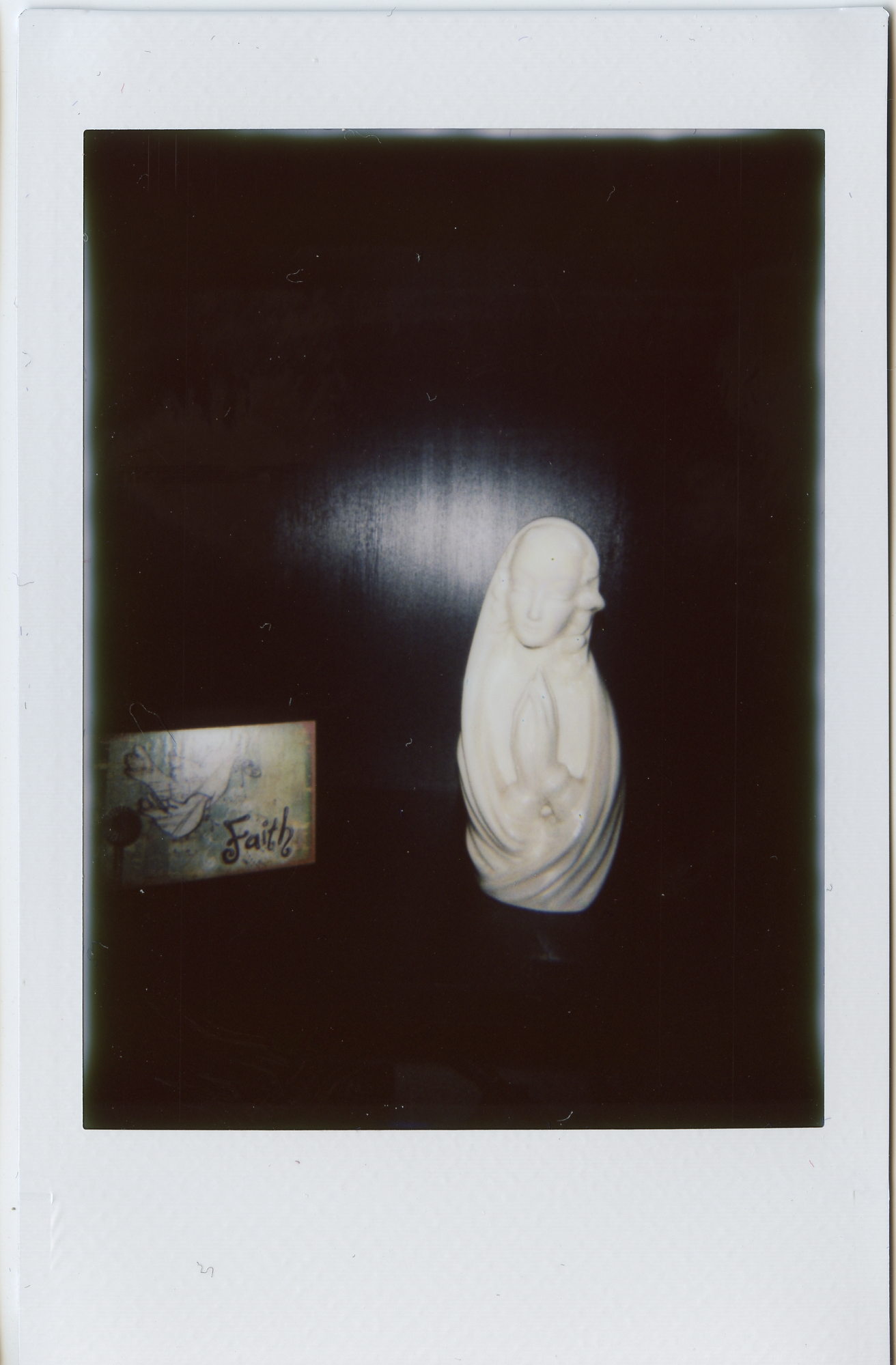
Creative Modes
The power switch sits on one side of the camera and it has 4 options: Power, Auto, Creative w/ Flash, and Creative (no flash). The Creative modes give you control over exposure time by allowing you to utilize yet another switch on the bottom, the infamous N/B switch (Thanks Holga!). Flip it to C on the power switch and B on the N/B switch and as long as you hold the shutter release, the lens stays open. There is even a lens release cable attachment, and some newer models have a remote in the lens cap.Speaking of creative modes, it also comes with flash gels in red, yellow, blue, purple, and green. These give a nice little hue change (see the Multi-Exposure shot at top) and give the camera even more opportunities to make interesting photos.
Worth It ?
Is it worth the expense ? The camera, new in box, runs between $50 and $150 depending on where you get it and what comes in the box. The film is about a dollar a shot (less, if you find a bulk sale), and producing multiple of the same photo requires a decent flatbed scanner. But yeah, I think it’s worth it if you like Lomography and think the Instax Mini is a little too Hello Kitschy bubblegum-looking for you. It maintains all of the traditional eccentricities of Lomography-style cameras (read Holga) with the vignetting, soft focus, rough edges and the plastic feel, but gives you instant satisfaction. It’s certainly something different to pull out on the next photo walk.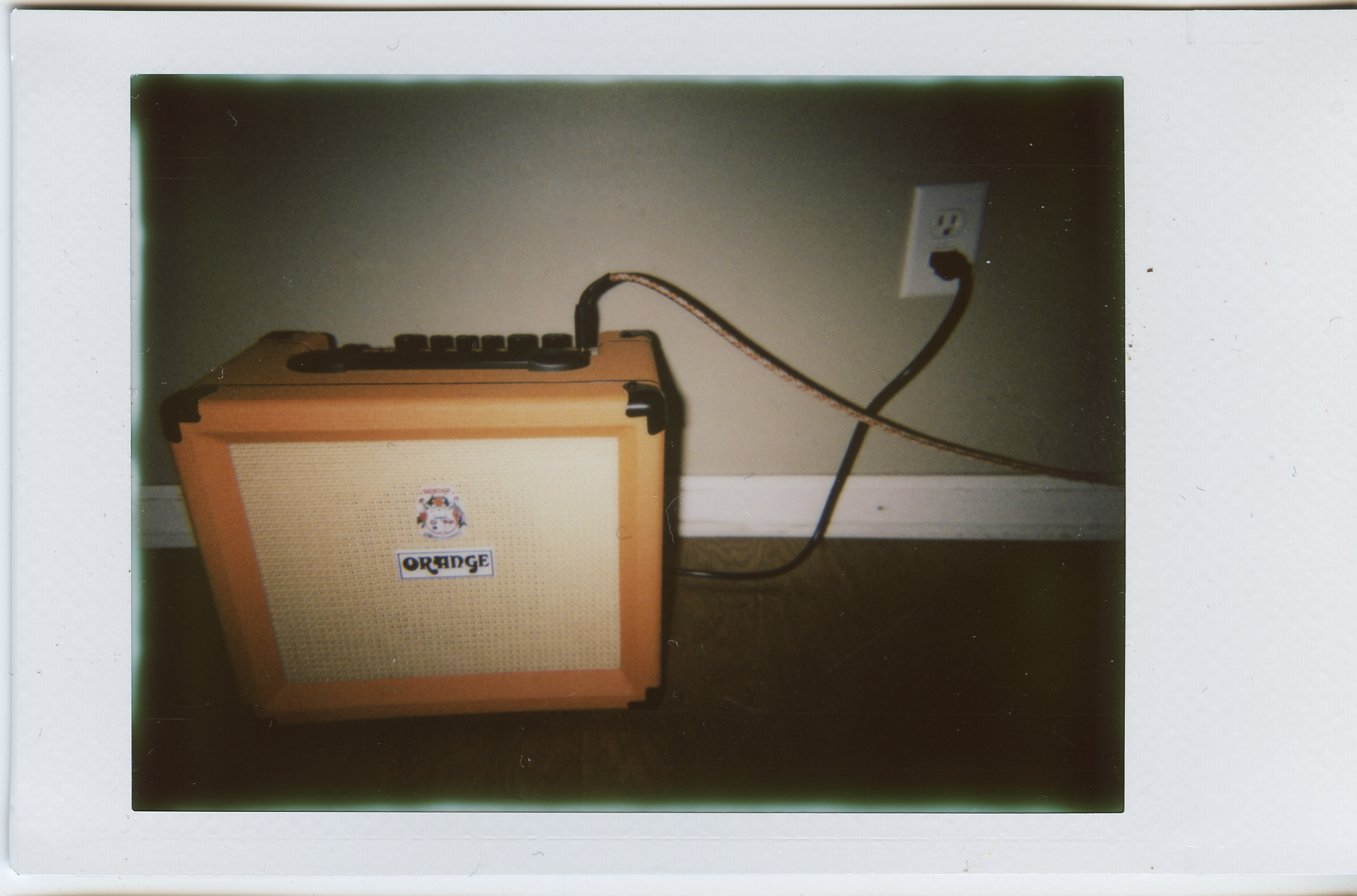

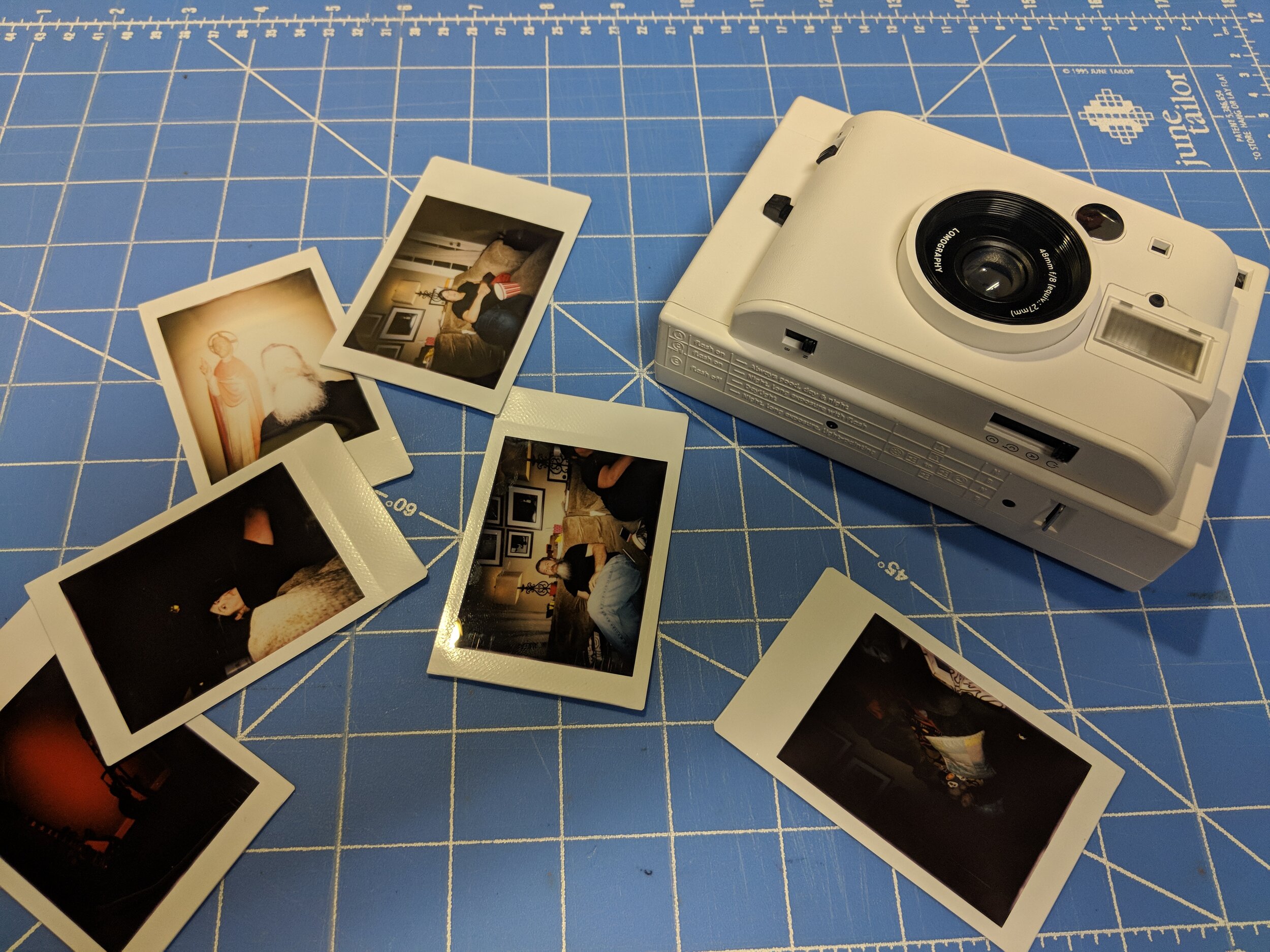
Leave a Reply
You must be logged in to post a comment.